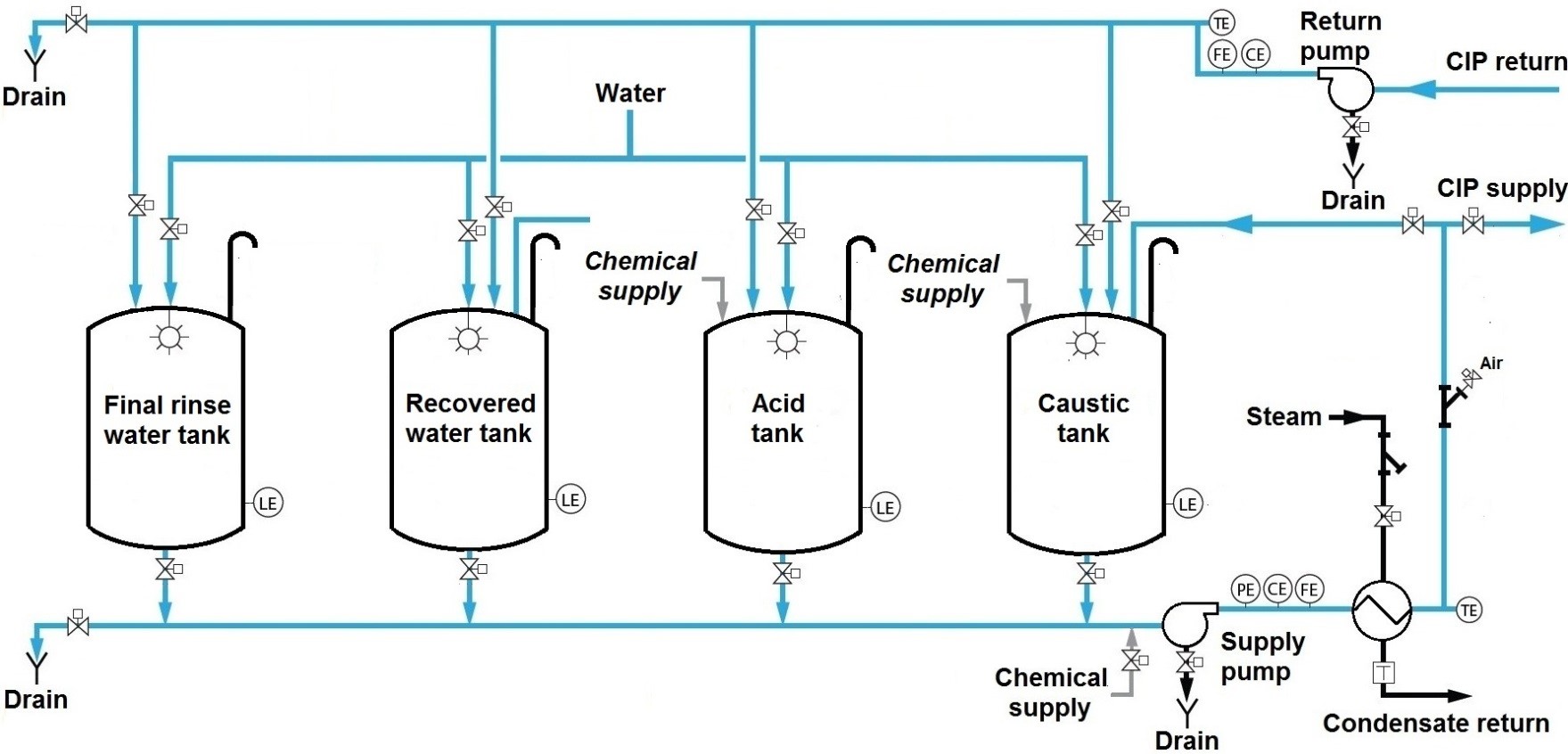Cleaning-in-place (CIP) is an automated cleaning technique used to get rid of residues from whole pipeline circuits and plant equipment without taking it apart or opening it up. It is a cleaning system that circulates chemical (detergent and disinfectant) solutions and rinsing water through tanks and piping of a food processing plant that is still assembled in its production configuration, and by jetting or spraying the product contact surfaces under conditions of increased turbulence, to provide fast, productive, consistent, and reproducible high quality cleaning of all product contact surfaces to a predetermined level of cleanliness.
A CIP system aims to combine the advantages of high solution temperature (thermal energy) and chemical activity of the detergent chemicals (chemical energy) with the mechanical action caused by the turbulent flow and impact of the sprays/jets of cleaning solution on the equipment surfaces in order to clean the entire process equipment and piping system in the shortest amount of time (mechanical energy).However, other elements are equally crucial to the success of the cleaning process, such as the water quality used to prepare the cleaning solutions (low counts of spoiling microorganisms, low water hardness), the close contact between the cleaning solution and soil (every surface must be cleaned), the implemented CIP program, the hygienic design of the cleaning equipment, and the caliber of the cleaning staff's work.
